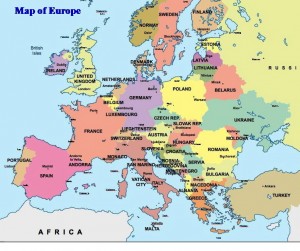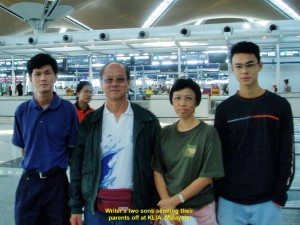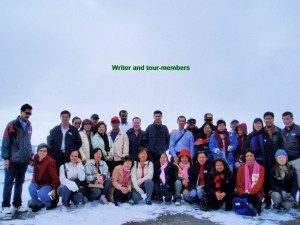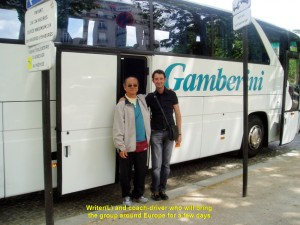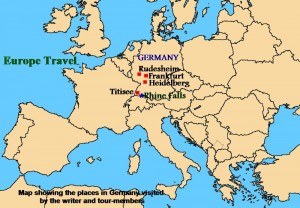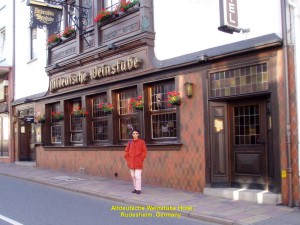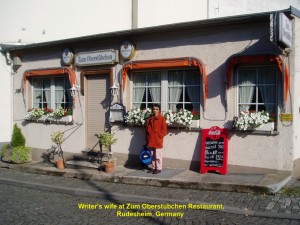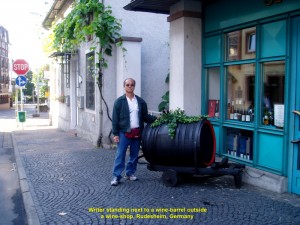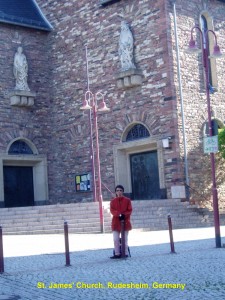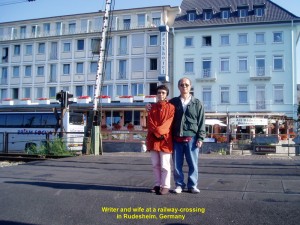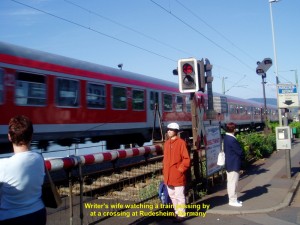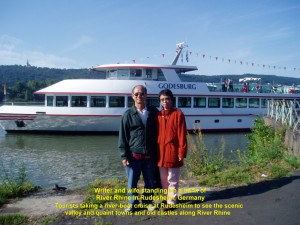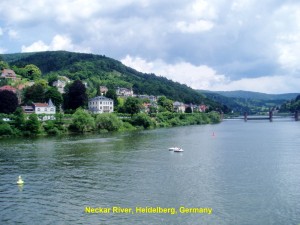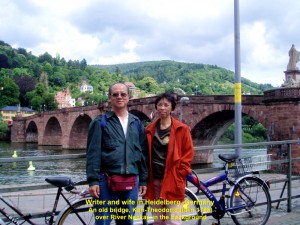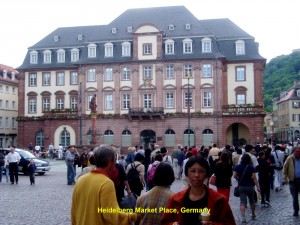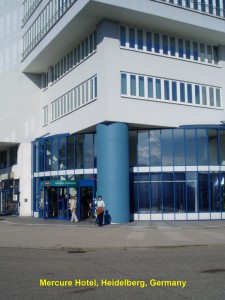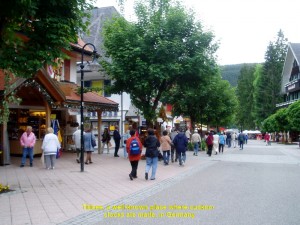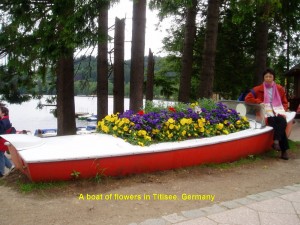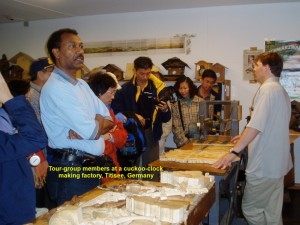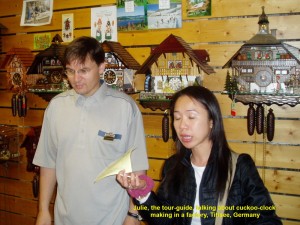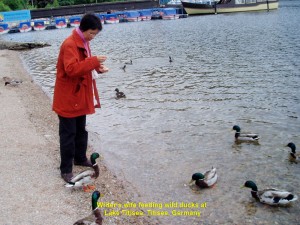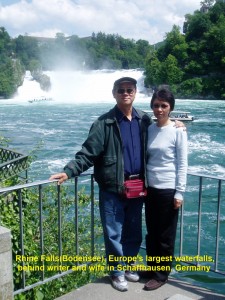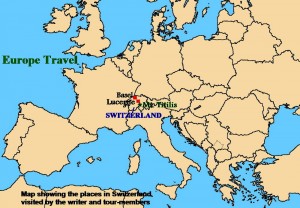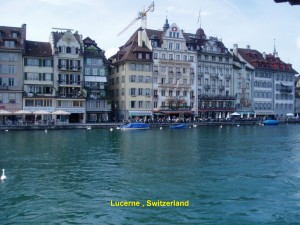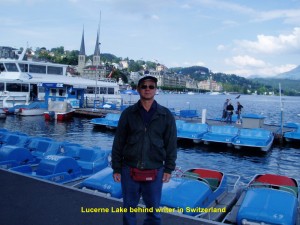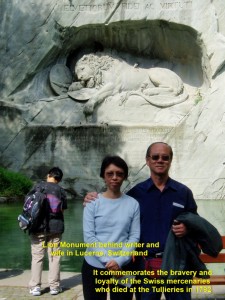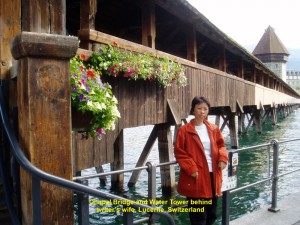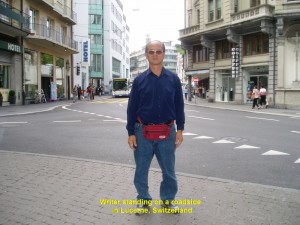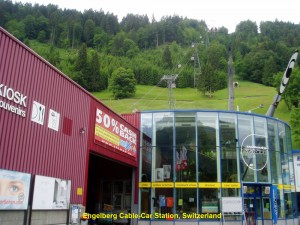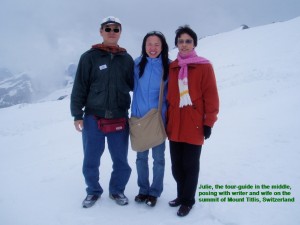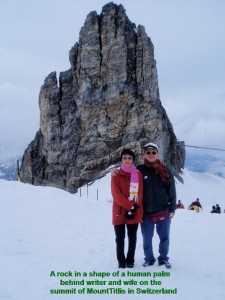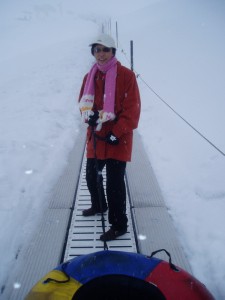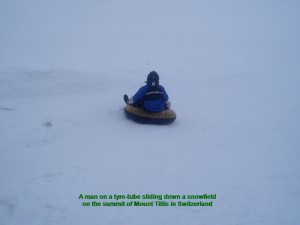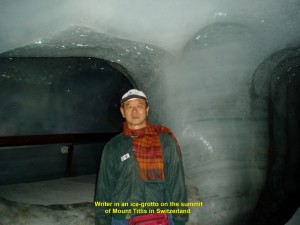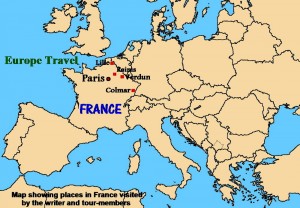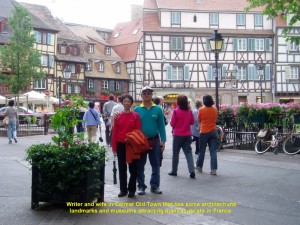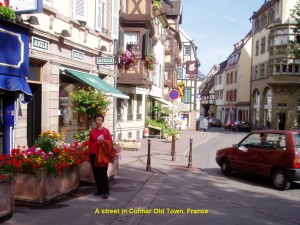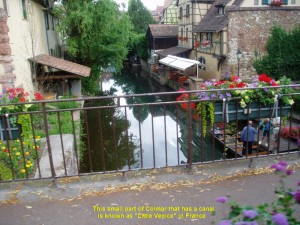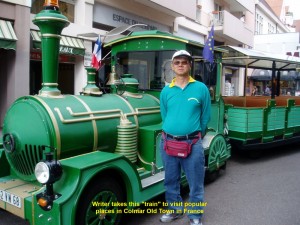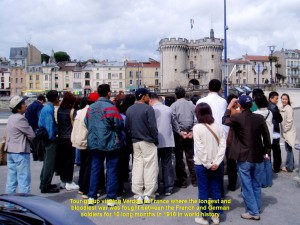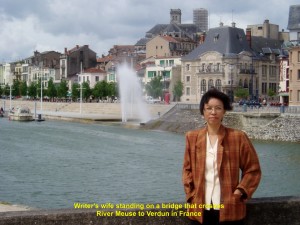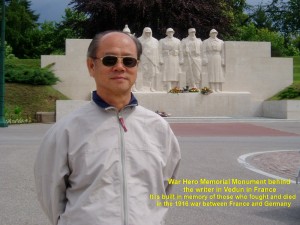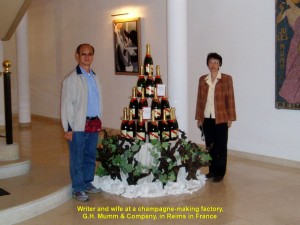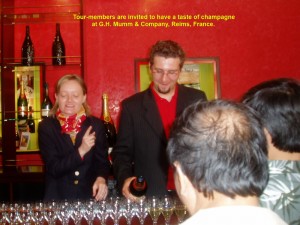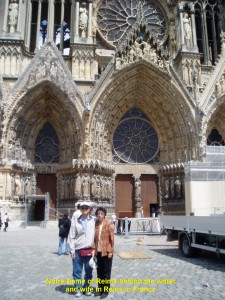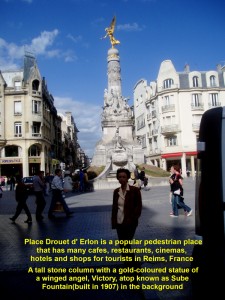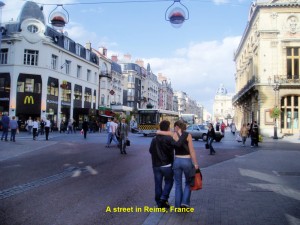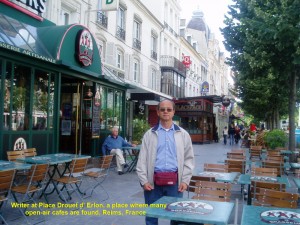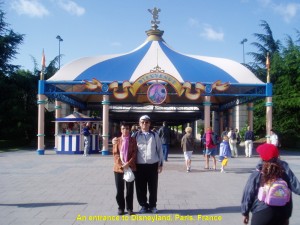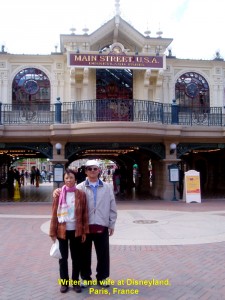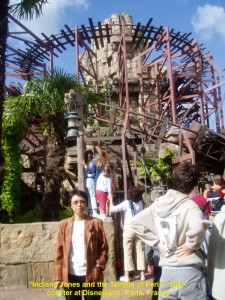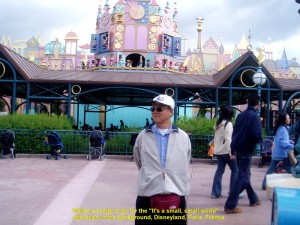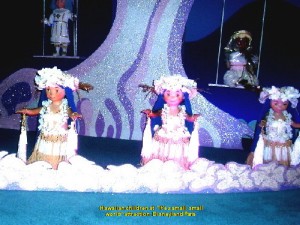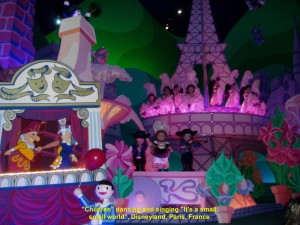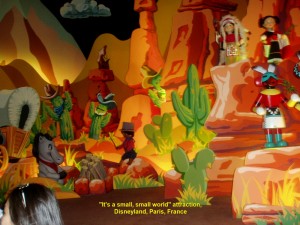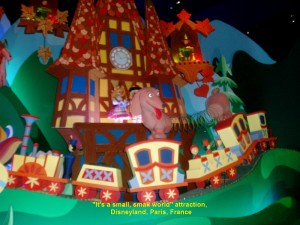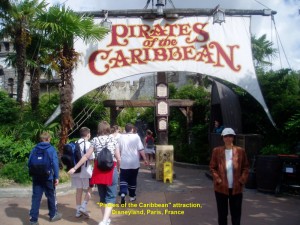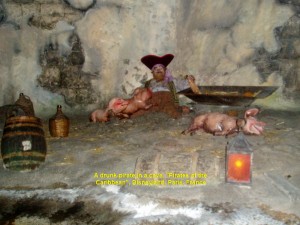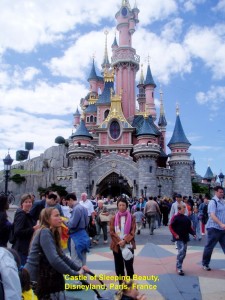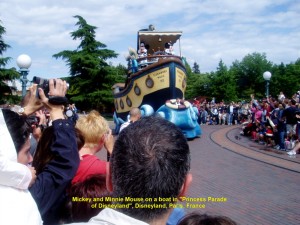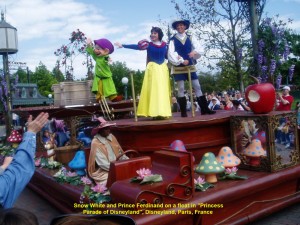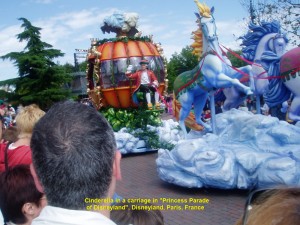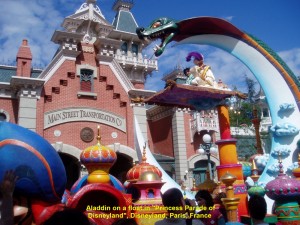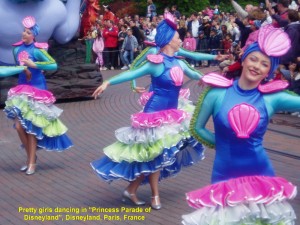Europe Travel (Part I)
Europe Travel I
Introduction
Europe, one of the five continents in the world, has many beautiful countries.
Its rich histories as well as diverse cultures and traditions lure many interested tourists to the continent. Furthermore, it is a land of splendid landscapes, vibrant cities of stunning old and modern architectural buildings, and lovely people of different nationalities, languages, religions, cultures and traditions.
European Union
Over twenty European nations have formed an association known as the European Union including France, Germany, Italy, Netherlands, Belgian, Luxemburg, Ireland, the United Kingdom, Denmark, Greece, Spain, Portugal, Finland, Sweden and Austria. More and more are bidding to join the union and soon Europe will be known as the United States of Europe (U.S.E).
In 2004, my wife and I joined a Europe tour of 6 interesting countries, viz. Germany, Switzerland, France, Belgium, Netherlands and England, in a very short period of 10 days.
Day 1 : Saturday, 19 June 2004 Departure for Frankfurt (Germany)
On 19 June 2004, my wife and I joined a group of 29 Malaysians at Kuala Lumpur International Airport (KLIA) . After a short briefing from our tour guide, Julie, we boarded a plane and flew to Germany via Brunei. The long journey was smooth except for a brief moment when we encountered a slight turbulence over the Bay of Bengal.
Day 2 : Sunday 20 June 2004 Rudesheim (Germany)
After travelling for 12 hours from Malaysia, we finally landed at Frankfurt Airport in Germany in the early morning. Then we boarded a coach and went to our first destination, a small German town known as Rudesheim.
Rudesheim
Rudesheim is located in the centre of the Rhine River region which is a Unesco World Heritage. It is a small town of about 10,000 dwellers. This peaceful guaint town is surrounded by low hills with vineyards. It has an old castle which houses a museum and a small railway station where passengers can take a train to Koblenz in the east or Frankfurt in the west. River Rhine Cruise boats stop here for tourists to visit this picturesque village.
As it was Sunday when we were there, most of the shops were closed and the streets were quiet. But lots of tourists, mostly Asians, were seen in the town. After spending a short time in the town, we left for another larger German town, Heidelberg.
Heidelberg
Heidelberg is 80 km south of Frankfurt and has a population of over 145,000. It has a picturesque place which is surrounded by densely forested mountains and has a deep wooded valley where a large river, Neckar, flows slowly. Spanning across the river is an old bridge, Karl-Theodor Bridge, built in 1788. It has an arched entrance with twin towers that are capped by spiky helmets. Near the entrance stands a bronze statue of a monkey. There is a local belief that if one can put his/her head inside the monkey’s hollow head without touching its inside, one will be blessed with good luck.
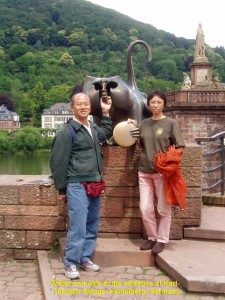
Writer and wife with a bronze statue of a monkey at the entrance of the Old Bridge, Heidelberg, Germany
Standing in the middle of the bridge, one can see an old ruined sandstone castle, Heidelberg Castle (Schloss), on a hill overlooking the valley. It was built in several stages from the 14th. century to the 17th. century. The oldest German university is located here.
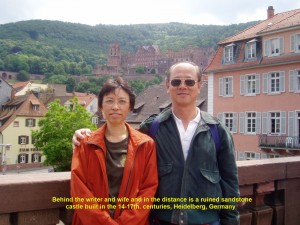
An old castle built in 14-17th. centuries in the distance behind the writer and wife in Heidelberg, Germany
After spending a few hours at the place, we checked in at a hotel, Mercure Hotel, in the downtown. As all the shops were closed on Sunday we retired early.
Day 3 : Monday 21 June 2004 Titisee (Germany)
At 8 a.m., we left Heidelberg for a small village, Titisee, in the lush green pine forests in the mountainous areas.
Titisee
Titisee is a tiny and tranquil village situated at a height of 858 metres above sea-level in the upper Black Forest. It has an oval-shaped lake of clear emerald-green water, Lake Titisee. The lake is 2 km long and 800 m wide. In winter it freezes and offers winter-sports activities like ice-skating, curling and ice-hockey. Surrounding the lake are lush green mountains of unspoilt beauty. Houses with steep roofs (for heavy snow to slide down in winter) are scattered all over the mountain slopes.
A cuckoo-clock factory
At Titisee, we visited a famous cuckoo-clock making factory known as Black Forest Clock Center. The kind owner explained to us the traditional way of making cuckoo-clocks. Then he showed us a wide variety of fine hand-made cuckoo-clocks in his shop. One of our tour members bought one at a price of 400 euro-dollars!.
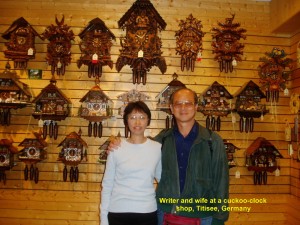
Antique but beautiful cuckoo-clocks for sale hanging behind writer and wife at a Titisee shop, Germany
Then we left the factory and browsed at nearby shops which were selling myriads of goods like dolls, porcelain-figurines, apparels, wooden and plastic cuckoo-clocks and flowers. While walking by Lake Titisee, my wife and I saw some wild ducks swimming in the water. More ducks appeared from nowhere when they saw us throwing pieces of bread to the ducks.
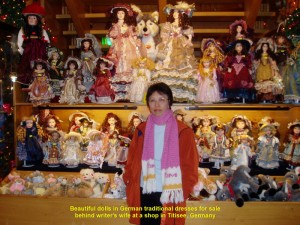
Beautiful dolls in German traditional dresses for sale behind writer’s wife at a Titisee shop. Germany
Rhine Falls (Bodensee), (near Schaffhausen)
After the Titisee visit, we travelled to a place near Schaffhausen to see the Europe’s largest waterfall, Rhine Falls (Bodensee). The waterfall is 150 m wide and 23 m high. It is a spectacular sight to see water cascading down the cataracts. Tourists can take a boat close to the waterfall to feel the power of the thundering water.
On a hill-top near the waterfall stands a medieval castle, Schloss Laufen. In the shallow, crystal-clear water, one can watch large fish swimming about.
Journey to Switzerland
After spending an hour at the waterfall, we left for a long journey to Lucerne in Switzerland. On the way, we saw scenic countrysides, quaint half-timbered cottages, lush green-pine forests and beautiful mountain landscapes in the Black Forest region in south-eastern Germany. Arriving at Basel on the Switzerland border, we passed through an immigration checkpoint without any problem.
Basel
Basel is a small Swiss border town. It is a centre of banking and chemical industries. Its port on River Rhine is Switzerland’s only port.
Lucerne (Switzerland)
Soon, we arrived at Lucerne, a quaint town with many tourists’ attractions, such as medieval squares, frescoed houses, ancient guildhalls, churches and chapels. A river, Reuss, flows from a large lake, Lucerne Lake, through the town. The lake is the 4th. largest in Switzerland.
We visited a few attractions there including the following:
The Lion Monument
An injured and dying lion was curved out of a limestone hill. It is a monument to commemorate the bravery and loyalty of Swiss mercenaries who died at the Tullieries in 1792.
Chapel Bridge
It is a covered wooden bridge built across Reuss River in the first half of the 14th. century as part of the town’s fortification. Old faded 17th. century paintings depicting scenes of the Swiss and local histories can be seen under the roof. The drabness of the bridge is cleverly camouflaged by pretty colourful flowers placed along its sides.
Water Tower
Near the Chapel Bridge is Water Tower, a 34 metre-high tower. It was built in a shape of an octagon in 1300 as part of the town wall. Later, it was used as an archive, treasury, prison and torture chamber.
Lucerne has some shops selling many kinds of Swiss products, such as army knives, cow-bells, watches, chocolates, porcelain dolls, cuckoo-clocks and beer-mugs.
Summer Solstice
In the evening we checked in at a hotel in a mountainous area near Lucerne. I was surprised that the day was still bright at 9.30 p.m. Then I realized that it was Summer Solstice.
Day 4 : Tuesday 22 June 2004 Mount Titlis (Switzerland)
We left Lucerne in the morning and travelled south to a Swiss mountain, Mount Titlis, which is 3238 metres above sea-level.
A Cable Car Ride
On arrival at Engelberg, we went straight to a cable car station at the foot of Mount. We sat in a cable car and were moving slowly up the mountain.
While going up we were surprised to see national flags of the world painted on cable cars. After ascending halfway, we changed to a larger cable car, Rotair, which goes up a steeper slope to the summit. It can rotate slowly as it ascends so that tourists inside can have a 360 degree panoramic view of the breathtaking scenery outside. They can see snow-capped mountains, U-shaped valleys, pine forests on mountain-slopes, scattered houses, green pastures and the Engelberg village.
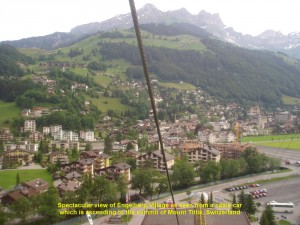
A breathtaking view of Engelberg Village as seen from a cable-car ascending to Mt. Titilis(3238 m), Switzerland
Cow Bells
Halfway up the mountain, we heard sound of umpteen bells that became louder and louder as we approached it. Then, looking out of the window of the cable car, we saw below us cows grazing in the meadows dotted with yellow flowers. We realized that the sound was from the large bells worn round the necks of the cows.
Mount Titlis Summit
When we reached the snow-covered top of Mount Titlis(3238 m above sea-level), we shivered as cold wind was blowing strongly. We left the Rotair and took a lift-chair to a snow-field. Standing on the snow-field, we feasted our eyes on snow-capped Alpine mountains and valleys in the distance. The scenery was awesome. Occasionally, visibility was poor when the air became misty and snow was falling.
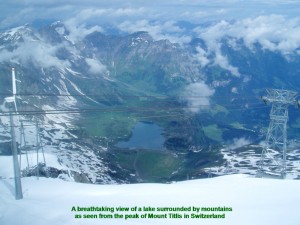
A spectacular view of a lake surrounded by Alpine Mountains as seen from the Mt. Titilis summit, Switzerland
Snow-Field Slide
On the snow-covered summit, many adults and children sitting on tyre-tubes were enjoying a short snow-field slide down a slope. My wife and I went for it, too. It was a rough ride for me. My bottom hit the uneven snow-field all the time. Besides, I had a fright when I was going round a sharp bend.
Ice Grotto
On the peak, there is an ice grotto adjoining the cable-car station. Later, we went down the mountain. As we were descending we enjoyed the beautiful scenery of the place. The we left left Mount Titlis for Colmar in France, a town of 100,000 inhabitants.
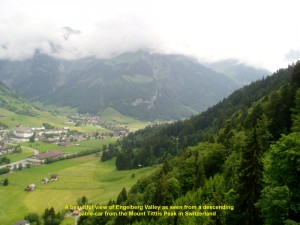
A beautiful sight of Engelberg Valley as seen from a descending cable-car from Mount Titilis Peak, Switzerland
Colmar (France)
Colmar has 100,000 inhabitants. It is surrounded by vineyards and well-known for wine-production. This charming town is also famous for quaint half-timbered buildings such as churches and houses, cloisters, balconies with potted colourful flowers, facades with ornate wood sculpture, paintings, gables and edifices from the Renaissance.
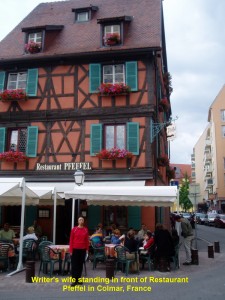
A beautiful half-timbered, quaint building used as a restaurant, Restaurant Pfeffel, in Colamr Old Town, France
The buildings have been well-restored and preserved since the Middle Ages. The streets are narrow and cobble-stoned. One should visit the picturesque small area dubbed “Little Venice” in the leather makers’ district as it has a canal behind colourful half-timbered buildings.
For a small fee, we took a short train ride to see the popular spots in the town.
In the evening, we retired to a hotel known as Novotel Colmar in the town..
Day 5 : Wednesday, 23 June 2004 Verdun (France)
Verdun
In the morning, we left Colmar for a small French town of 25,000 dwellers, Verdun. Located in the north-east of France, Verdun is the place where the longest and bloodiest battle in world history was fought during the 1st. World War. The battle began on 21st. February 1916 when the German soldiers attacked the French soldiers. They fought for 10 long months resulting in heavy casualties on both sides – 328,000 Germans and 348,000 French. The total number of deaths was a staggering 250,000.
We visited the monument in memory of the war heroes near a bridge which is over River Meuse flowing through Verdun. Then we left for Reims.
Reims
Reims has a population of 200,000. It is in a large region of vineyards and a famous centre for producing French champagne.
G.H. Mumm & Company
Arriving at Reims, we visited one of its many well-known wine-cellars, G.H. Mumm & Company. A guide of this company brought us to a large wine-vault where barrels of champagne are stored and explained to us the fine art of champagne-making. Later, we were generously treated to some champagne.
In the lobby of the company, we saw some large Formula 1 Race posters. One of them showed Michael
Schumacher and his boss celebrating the former’s victory in one of the Formula 1 Racing Car Championship races. I guessed the company was sponsoring the champagne for the prestigious race.
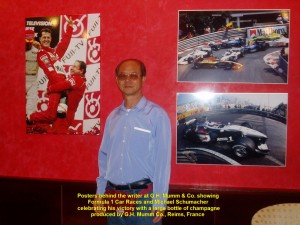
Pictures of Michael Schumacher and Formula One Race on a wall behind writer in G.H. Mumm & Co., Reims, France
Notre Dame of Reims
Thanking the company’s guide, we headed for Reim’s largest and most well-known cathedral, Notre Dame of Reims. It was built in the Gothic architectural style of the 12th. century. Many French kings including King Louis XVI were crowned here.
Its imposing facade has two 81.4 m tall towers, three portals with statues and statuettes, a large, round window in the shape of a rose (rose window) above the middle portal and a gallery of kings above the rose window. Statues and sculptures of religious figures, stained glass, tapestries and paintings depicting religious themes can be seen inside the cathedral. After spending an hour at the cathedral, we checked in at a hotel, Europe Hotel.
Reims Streets
After dinner, we strolled in some Reims streets and noticed that chairs and tables outside cafes and restaurants were a common sight. One can sit there and have a meal, cup of cappuccino or mug of beer. Besides, one can watch people and traffic passing by.
Day 6: Thursday 24 June 2004 Disneyland Paris / Euro Disney, Paris
Early in the morning we left Reims for a world famous theme park known as Disneyland Paris (or Euro Disney) in Paris, France. Located near Paris City, it was officially opened in 1992. It offers a wide variety of attractions for both adults and children. The park is divided into 5 areas, viz.
Main Street USA
Discoveryland
Fantasyland
Adventureland and
Frontierland
Each area offers some interesting and enjoyable attractions.
As we had a whole day to spend at the park, we chose a few of them that we liked, such as the following:
“Dumbo, the Flying Elephant”
It is a slow and relaxing train ride. The train resembling Dumbo, the Flying Elephant in a Disney animated film “Flies”, cruises slowly over the Fantasyland.
“Honey, I Shrunk the Audience”
We watched this short movie with a special pair of spectacles that gave us a 3-D virtual reality experience. The story was about Professor Szalinski who used his new contraption and accidentally “shrunk” the audience. While watching the movie, we felt as though we were involved in it. We could feel mice running around our feet trying to escape from a large, grey cat. We felt uneasy when the cat came out of the screen and stared at us closely for a long time before it disappeared. Later, a huge venomous snake suddenly appeared in front of us and looked at us fiercely. We felt a rush of adrenalin to our brains when it opened its large mouth showing its long, sharp fangs. Then it quickly “swallowed” us up. It was truly a virtual reality and scary experience!
“Star Wars”
We joined a very long queue for a 10-minute flight simulator ride in a “space craft” in the “outer space”. It offered us an exciting intergalactic travel adventure, Star Wars. The most thrilling moment in the adventure was when our “space craft” manoeuvred quickly to avoid the attack by several enemy “space-crafts”.
“Indiana Jones and the Temple of Peril”
This is a rough and jerky roller-coaster ride. My wife and I sat together on a hard seat in a “mine-car”. As it moved backwards all the time we did not know what to expect behind us. We felt shocked when it, suddenly, made a complete vertical loop. My spectacles nearly fell off when I was upside down. After the short ride we felt a bit shaky.
“It’s a Small, Small World” Sitting in a boat, my wife and I cruised round the “world” watching “children” of different nationalities (little pretty dolls in their national costumes) dancing and singing a beautiful children song, “It’s a Small, Small World”. During that short ride, we felt we were children again.
“Pirates of the Caribbean”
This attraction shows scenes of pirates’ lives. As we went through the scenes we could hear voices of the pirates and victims. We learned that the pirates were violent and merciless creatures. They attacked, robbed and burnt ships and villages, killed, drank and gambled.
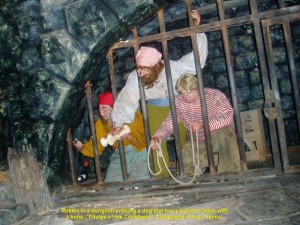
Pirates in dungeon enticing a dog with a bone at “Pirates of the Caribbean’ attraction, Disneyland Paris
Sleeping Beauty Castle
On the ground floor of this large magnificent castle, there is a legendary dragon sleeping in its lair. Occasionally, it wakes up and blows out a big fire. Upstairs, tapestries and beautiful stained glass windows depicting the Sleeping Beauty’s story can be seen.
Princess Parade at Disneyland
The highlight of the day at Disneyland starts at 4 p.m. It is the “Princess Parade”. During this awesome parade, all the characters in the Disney animated films turn up, such as Mickey and Minnie Mouse, Beauty and the Beast, Cinderella and her Prince Charming, Sinbad and his pretty lady, Snow-White and the Seven Dwarfs, and many more. They appear on large and colourful slow-moving floats waving happily to the spectators.
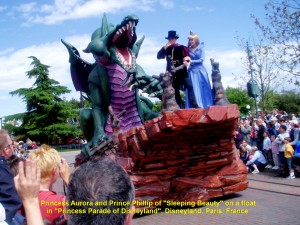
Princess Aurora and Prince Phillip of “Sleeping Beauty” on a float in the “Princess Parade of Disneyland”, Disneyland Paris
In front of the parade, beautiful ladies and handsome gentlemen in striking colourful costumes dance, gracefully and happily, to the tune of a loud music coming from big loudspeakers placed at strategic places. This is truly a colourful and spectacular event no visitor should miss.
After a day of fun, excitement and adventure at Disneyland, we reluctantly left for Paris City in the evening.
(Continued in Europe Travel Part II)
Written by Choo Chaw, Kluang, Johor, Malaysia.

